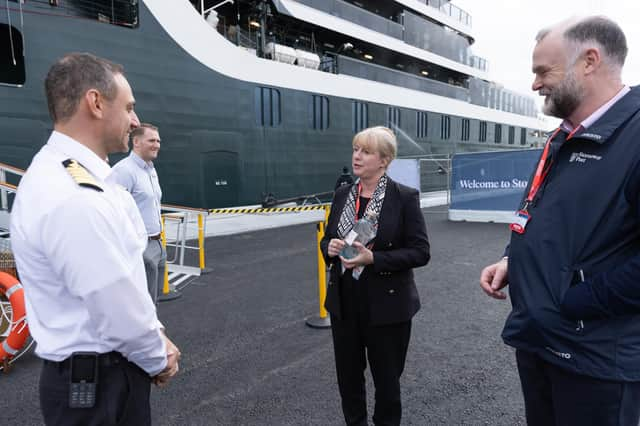Massive challenges remain for renewables future


Chair Alistair Dodds and chief executive Stuart Black joined deputy First Minister, Shona Robison, for a dinner in Lews Castle with figures representing the major developments which are in the offing.
The event took place amidst increasing concerns about the lack of any clear plan for how massive developments over the next few years are to be co-ordinated or accommodated on issues like housing, roads and harbour facilities.
Advertisement
Hide AdAdvertisement
Hide AdHIE itself has seen its budget cut heavily, while Comhairle nan Eilean Siar has virtually no capital budget for anything.
Citing the flagship Stornoway Port Authority project, Mr Black said: “What's encouraging is they’re not just sitting still, resting on their laurels. They have another phase which would create more lay-down space, a deeper berth – the new one is 10m metres the second one would be 13 metres – and that’s what the offshore sector needs.
“We can get a bit hung up about the development of these sites, although they are significant. But while important, what's also important is the long term maintenance and operations side of things, because that creates long-term employment. The one-off construction jobs will last as it long as it takes to build the windfarms, and we are trying to capture as much of that as we can but the operation and maintenance side will create long term jobs.”
Mr Black said: “Although money is very tight the Scottish Government has set aside a £500 million fund for offshore renewables and we’re hoping to get as much of that unto the region as we can”.
Advertisement
Hide AdAdvertisement
Hide AdAs reported by the Gazette last week, the Port Authority and Harland & Woff are bidding into this fund for their planned second phase development. However, it is already heavily over-subscribed and the cost of this one project is put at £99 million.
Mr Black said: “There will have to be contributions from government, but there’s also the likes of the Scottish National Investment Bank and ‘Flowmis’ through the UK Government.
“For renewables to get us to Net Zero it needs the Highlands and Islands to be working – the shores around here are going to be creating a lot of the renewable power that’s needed, so the infrastructure needs to come.”
He said that it needs a “whole infrastructure approach” and while the “numbers are still being quantified it will ramp up more”.
Advertisement
Hide AdAdvertisement
Hide AdMr Dodds added: ”I think the fact that they’ve created this £500 million fund does show there’s an understanding of the need. We’ve got a natural advantage over the rest of Scotland. Offshore wind is around the Highlands and Islands, the bigger ports are here and it’s up to us to make sure that we get our share of these funds. If we don’t do it, we’re going to miss a huge opportunity.”